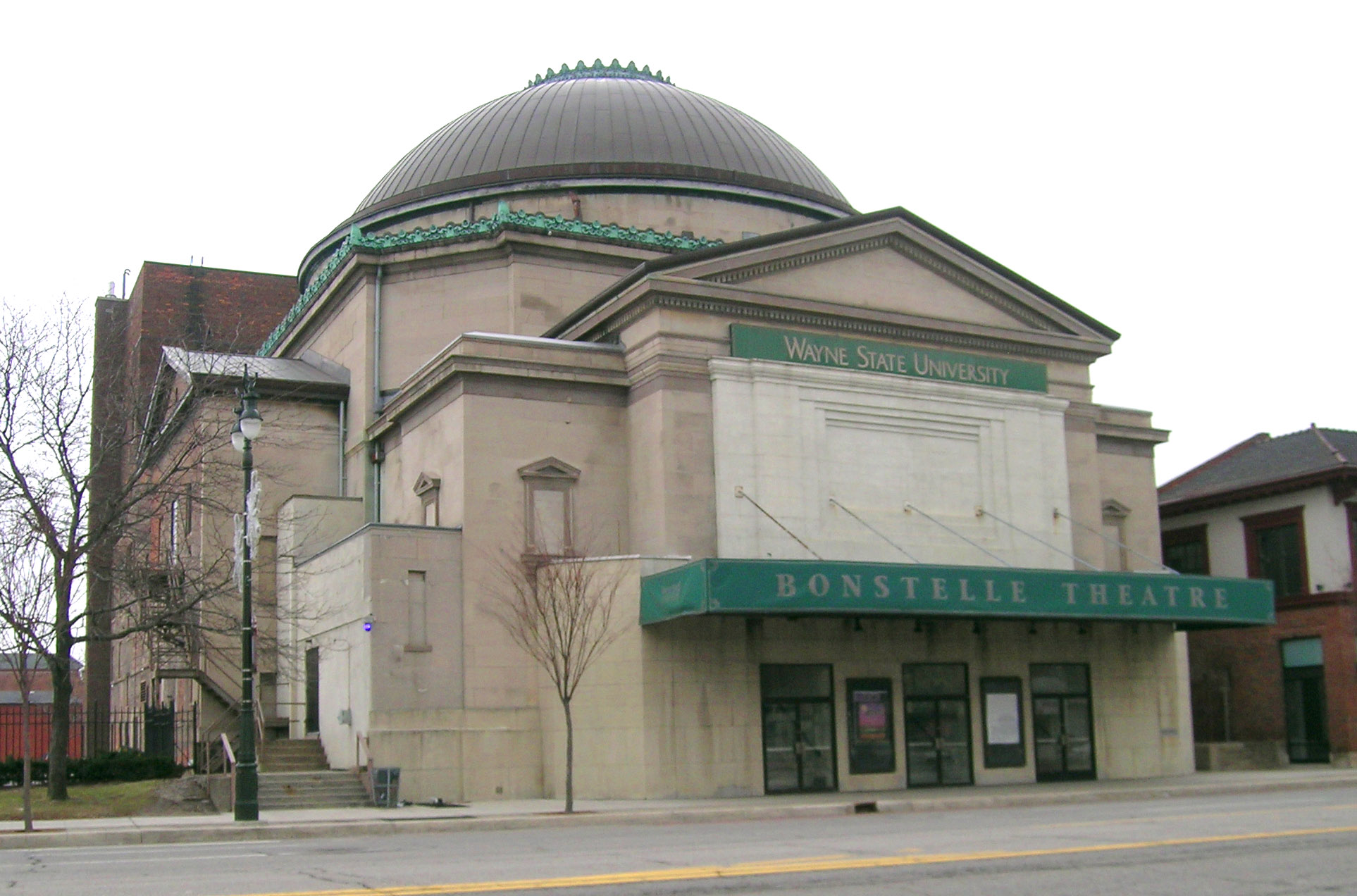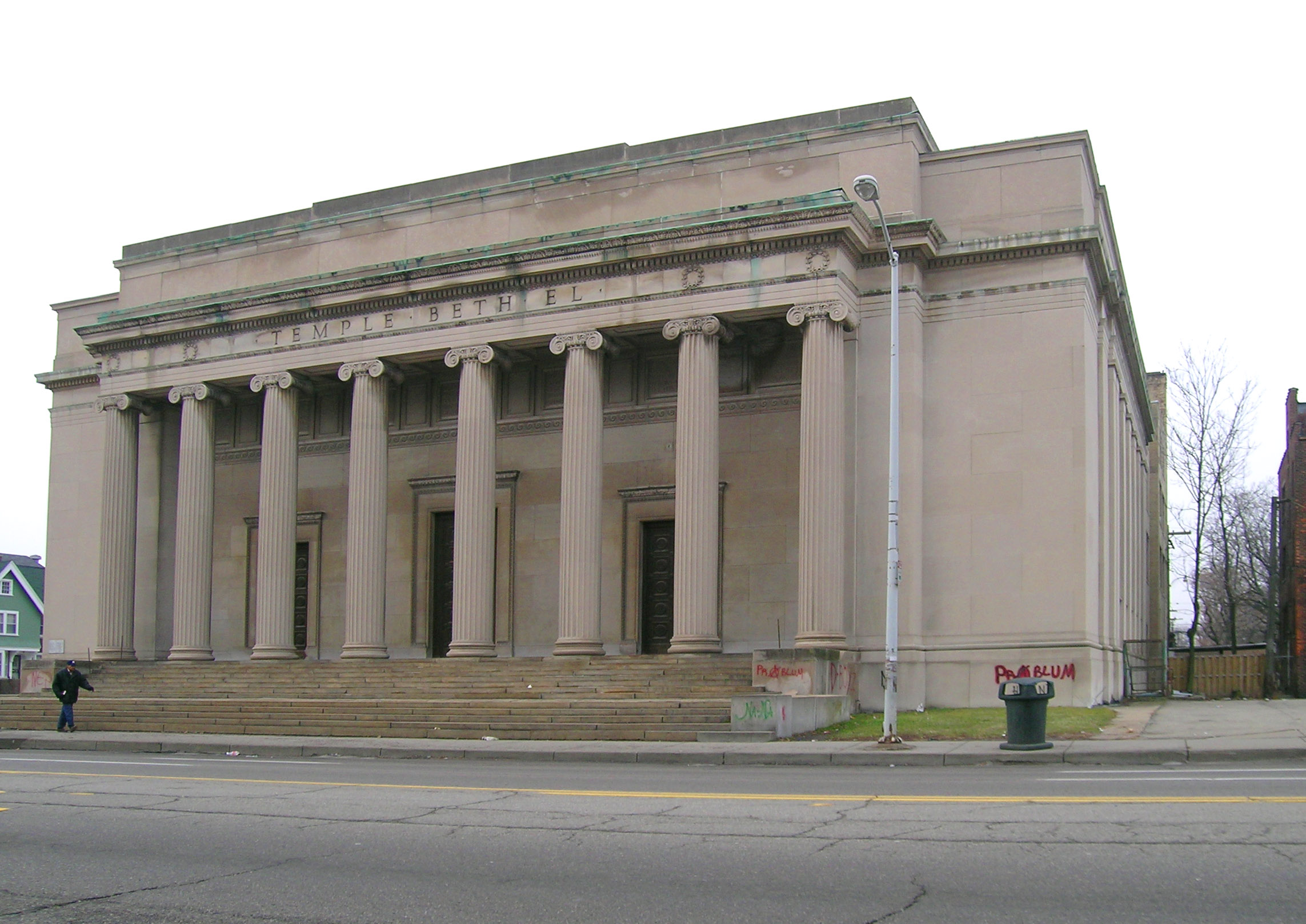- Temple Beth El (Detroit, Michigan)
Infobox_nrhp | name =Temple Beth-El
nrhp_type =

caption = Temple Beth El building built in 1902-1903
location= 3424 Woodward Ave.,Detroit, Michigan
lat_degrees = 42
lat_minutes = 20
lat_seconds = 46
lat_direction = N
long_degrees = 83
long_minutes = 3
long_seconds = 25
long_direction = W
locmapin = Michigan
area =
built =1902
architect= Albert Kahn; ,C. Howard Crane
architecture=Beaux Arts
added =August 03 ,1982
governing_body = Private
mpsub=Religious Structures of Woodward Ave. TR
refnum=82002911cite web|url=http://www.nr.nps.gov/|title=National Register Information System|date=2008-04-15|work=National Register of Historic Places|publisher=National Park Service] Infobox_nrhp | name =Temple Beth-El
nrhp_type =

caption = Temple Beth El building built in 1921-1922
location= 8801 Woodward Ave.,Detroit, Michigan
lat_degrees = 42
lat_minutes = 22
lat_seconds = 50
lat_direction = N
long_degrees = 83
long_minutes = 4
long_seconds = 52
long_direction = W
locmapin = Michigan
area =
built =1921
architect= Albert Kahn
architecture=Classical Revival
added =August 03 ,1982
governing_body = Private
mpsub=Religious Structures of Woodward Ave. TR
refnum=82002912cite web|url=http://www.nr.nps.gov/|title=National Register Information System|date=2008-04-15|work=National Register of Historic Places|publisher=National Park Service]Temple Beth El, also known as Temple Beth-El, is a Reform
synagogue currently located inBloomfield Hills, Michigan . Beth El was founded in 1850 in the city ofDetroit , and is the oldest Jewish congregation inMichigan .On
August 03 ,1982 , its former buildings at 3424 and 8801 Woodward Avenue in Detroit were added to theNational Register of Historic Places .Early years
In 1850, Sarah and Isaac Cozens arrived in Detroit and moved into a house near the corner of Congress and St. Antoine street. At the time, there were only 60 Jews in Detroit (out of a population of over 21,000) and no synagogues.Irving I. Katz, "The Beth El Story, with a History of the Jews in Michigan before 1850," Wayne State University Press, 1955.] Sarah urged her co-religionists to establish a congregation, and on September 22, 1850, twelve Jewish families came together at the Cozens's home to found the "Bet El Society" (a Michigan Historical Marker now commemorates this site [http://www.mcgi.state.mi.us/hso/sites/15519.htm Michigan Historical Marker] : First Jewish Religious Services Informational Designation.] ). The congregation engaged the services of
Rabbi Samuel Marcus of New York.Rabbi Marcus conducted services in the Orthodox mode, first in the Cozens's home and later in a room above a store on Jefferson Avenue. In 1851, the congregation was legally incorporated, and the next year, the first Constitution was adopted. In 1854, Rabbi Marcus died of cholera, and Rabbi Leibman Adler was hired.Kerry M. Olotzky, [http://books.google.com/books?id=weL9M46TcU8C The American Synagogue A History And Source Book] , Greenwood Press, ISBN 0313288569, pp. 175-177.]
In 1856, the congregation adopted a new set of by-laws including a number of innovations from the then-emerging Reform Judaism. Although the congregation was slowly growing, due in part to the influx of Jews to Detroit, some members of the congregation were unhappy with the reforms. In 1860, the new by-laws were debated and re-affirmed. However, the introduction of music into the worship service in 1861 caused a split, with 17 of the more Orthodox members of the congregation leaving to form
Congregation Shaarey Zedek . The remaining congregants adopted a new set of by-laws in 1862, introducing greater reforms.Temple Beth El was one of the thirty-four congregations involved in the founding of the Union of American Hebrew Congregations (now the
Union for Reform Judaism ) in 1873, and immediately became officially affiliated with the organization. In 1889, Beth El hosted the Eleventh Council of the Union of American Hebrew Congregations, at which theCentral Conference of American Rabbis was founded.In 1861, the congregation moved into a new temple on Rivard Street. In 1867, they purchased a spacious building on Washington Boulevard and Clifford Street, where services were held until 1903. A number of rabbis served at Beth El, none staying for long until the tenth rabbi, Louis Grossman, arrived in 1884, immediately after his graduation from
Hebrew Union College . Grossman was the first American-born rabbi of Beth El, and he organized a number of reforms, including the adoption of the Union Prayer Book.Leo M. Franklin Years
Rabbi Grossman resigned in 1898, and the congregation hired
Leo M. Franklin , a young Rabbi from Omaha and another Hebrew Union graduate. The choice proved fortuitous, as Franklin served the congregation for over forty years. Franklin organized the United Jewish Charities (an umbrella organization to coordinate philanthropic activities), began the Woman's Auxiliary Association (later the Sisterhood of Temple Beth El), and assumed editorship of the "Jewish American", Detroit's first English-Jewish weekly. He also instituted an interdenominational community Thanksgiving service and established a student congregation (the forerunner of theHillel Society ) at theUniversity of Michigan .Under Franklin's leadership, Temple Beth El grew rapidly. In 1902, the congregation authorized a new building on Woodward near Eliot. The building was designed by the young (and then relatively unknown) Beth El congregant
Albert Kahn . Beth El used this building until 1922; it is currentlyWayne State University 's Bonstelle Theatre. In 1922, with a congregation of over 800 families, a new temple was built at Woodward and Gladstone; Albert Kahn again designed the building. The building currently houses the Lighthouse Cathedral.Later Years
Rabbi Franklin retired in 1941 and was replaced by B. Benedict Glazer. After Glazer's untimely death in 1952, Richard C. Hertz was elected to lead the congregation.
Once again, in 1973, the membership outgrew its facilities. With the movement of many of the congregants to the northern suburbs, Beth El built a new temple in Bloomfield Hills at Telegraph and 14 Mile Road. The facility was designed by
Minoru Yamasaki . [http://www.tbeonline.org/aboutus/history/ Temple Beth El] history page.]Temple Beth El currently has a membership of almost 1500 families and is led by Rabbi Daniel B. Syme.
External links
* [http://oss.tbeonline.org/Rfranklinarchive1/exhibit2/vexid2.htm Photographs from the Rabbi Leo M. Franklin archives] : these include period photographs of the buildings used by Temple Beth El throughout their history.
References
Wikimedia Foundation. 2010.
